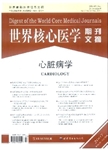已确诊心血管疾病患者的颈动脉硬度与新发血管事件风险:SMART研究
Carotid stiffness and the risk of new vascular events in patients with manifest cardiovascular disease. The SMART study作者机构:Julius Centre for Health Sciences and Primary Care University Medical Centre Utrecht Huispostnummer Str. 6. 131 3508 BA Utrecht Netherlands
出 版 物:《世界核心医学期刊文摘(心脏病学分册)》 (Digest of the World Core Medical Journals(Cardiology))
年 卷 期:2005年第1卷第12期
页 面:45-46页
学科分类:1002[医学-临床医学] 100201[医学-内科学(含:心血管病、血液病、呼吸系病、消化系病、内分泌与代谢病、肾病、风湿病、传染病)] 10[医学]
主 题:动脉硬度 血管疾病患者 SMART 事件风险 动脉疾病 舒张期 队列研究 颈总动脉 超声检测 颈动脉内径
摘 要:Aims: To study whether arterial stiffness is related to risk of new vascular events in patients with manifest arterial disease and to examine whether this relation varies between patients who differ with respect to baseline vascular risk, arterial stiffness, or systolic blood pressure(SBP). Methods and results: The study was performed in the first consecutive 2183 patients with manifest arterial disease enrolled in the SMART study(Second Manifestations of ARTerial disease), a cohort study among patients with manifest arterial disease or cardiovascular risk factors. Common carotid distension(i.e. the change in carotid diameter in systole relative to diastole) was measured at baseline by ultrasonography. With the distension, several stiffness parameters were determined. In the entire cohort, none of the carotid artery stiffness parameters was related to the occurrence of vascular events. However, decreased stiffness was related to decreased vascular risk in subjects with low baseline SBP. The relation of carotid stiffness with vascular events did not differ between tertiles of baseline risk and carotid stiffness. Conclusion: Carotid artery stiffness is no independent risk factor for vascular events in patients with manifest arterial disease. However, in patients with low SBP, decreased carotid stiffness may indicate a decreased risk of vascular events.



